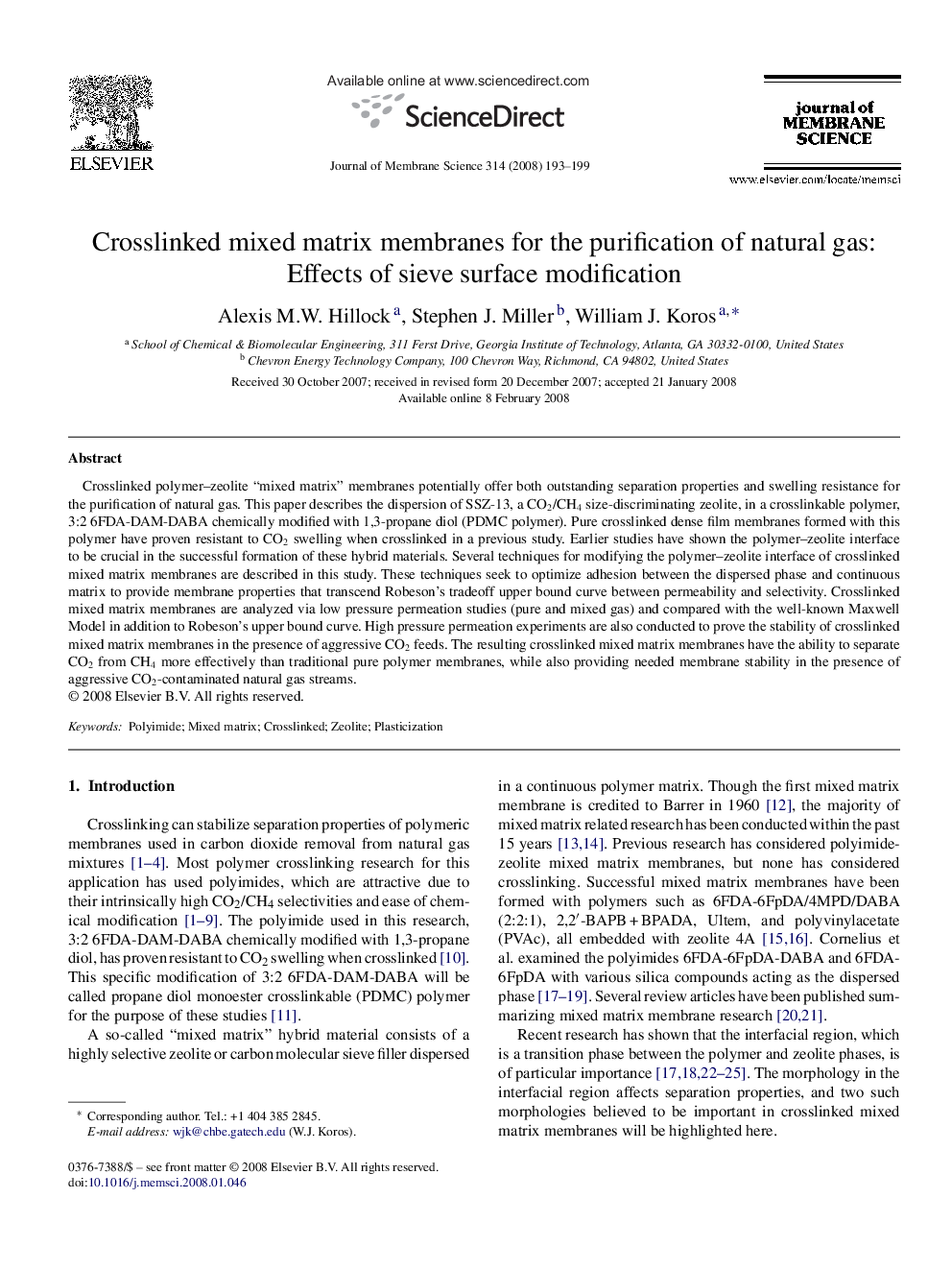| Article ID | Journal | Published Year | Pages | File Type |
|---|---|---|---|---|
| 638174 | Journal of Membrane Science | 2008 | 7 Pages |
Crosslinked polymer–zeolite “mixed matrix” membranes potentially offer both outstanding separation properties and swelling resistance for the purification of natural gas. This paper describes the dispersion of SSZ-13, a CO2/CH4 size-discriminating zeolite, in a crosslinkable polymer, 3:2 6FDA-DAM-DABA chemically modified with 1,3-propane diol (PDMC polymer). Pure crosslinked dense film membranes formed with this polymer have proven resistant to CO2 swelling when crosslinked in a previous study. Earlier studies have shown the polymer–zeolite interface to be crucial in the successful formation of these hybrid materials. Several techniques for modifying the polymer–zeolite interface of crosslinked mixed matrix membranes are described in this study. These techniques seek to optimize adhesion between the dispersed phase and continuous matrix to provide membrane properties that transcend Robeson's tradeoff upper bound curve between permeability and selectivity. Crosslinked mixed matrix membranes are analyzed via low pressure permeation studies (pure and mixed gas) and compared with the well-known Maxwell Model in addition to Robeson's upper bound curve. High pressure permeation experiments are also conducted to prove the stability of crosslinked mixed matrix membranes in the presence of aggressive CO2 feeds. The resulting crosslinked mixed matrix membranes have the ability to separate CO2 from CH4 more effectively than traditional pure polymer membranes, while also providing needed membrane stability in the presence of aggressive CO2-contaminated natural gas streams.
